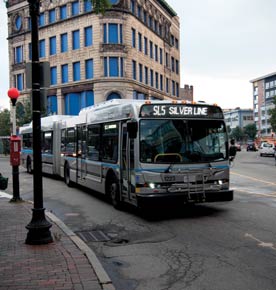Supply and Demand
Langley Park, home to amazing crazy corn and looming Metro expansion plans, is still struggling to balance desirable new development and affordability. As the plans move forward, advocates in the area along with concerned residents continue to push for countywide policy changes that could help current residents stay put.
In an ideal world, there would be enough smart growth development in the United States to meet demand and eliminate the premium these neighborhoods command. More and more developers are incorporating smart growth principles into their work, but the possibility of meeting demand for smart growth neighborhoods is still a long way off. In the interim, we can make smart growth more affordable, make affordable housing more smart growth and bridge the gap between the two to help families of all sizes and income levels live in great neighborhoods.





Comments